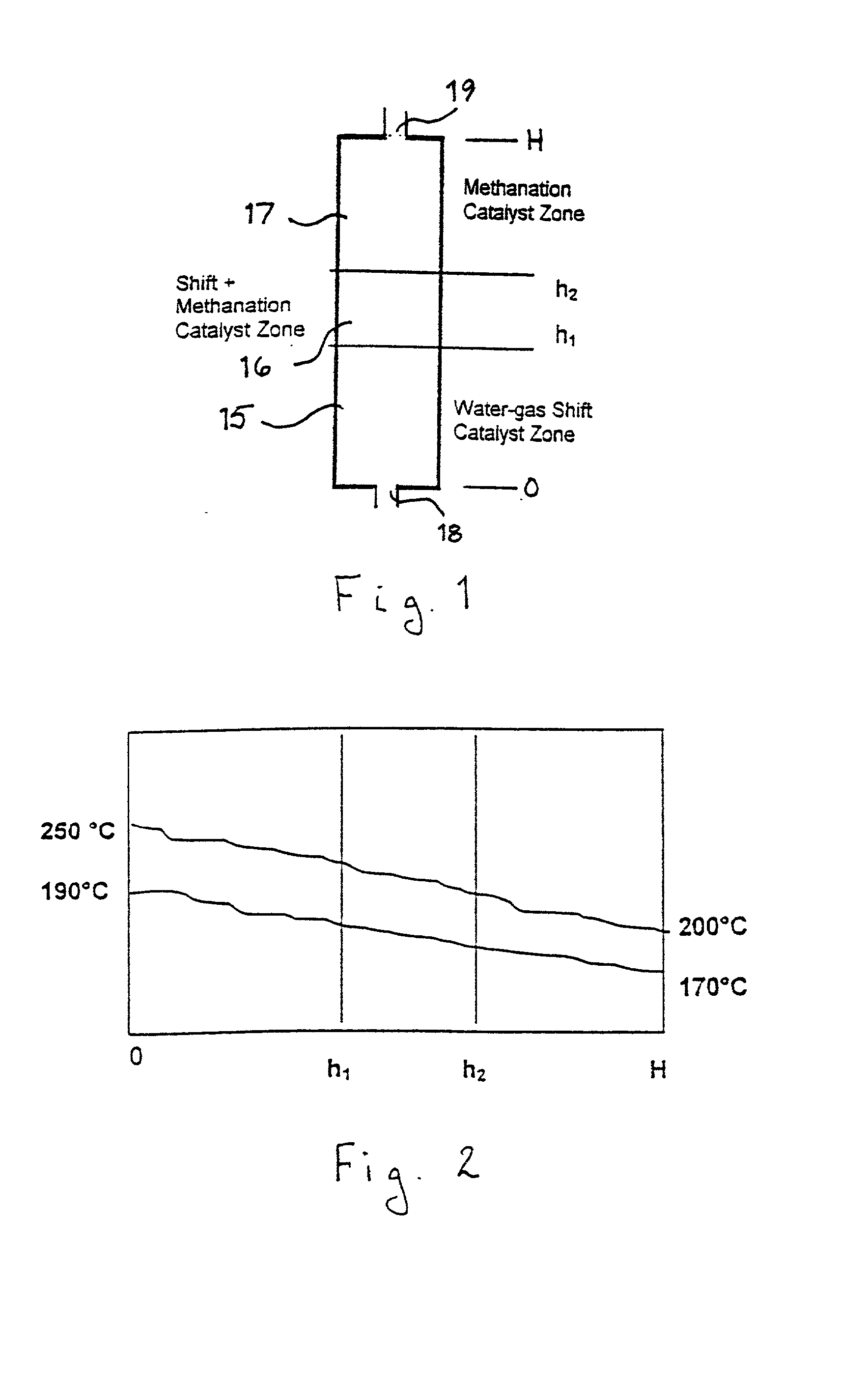Compact combined shift and selective methanation reactor for co control
a methane reactor and combined shift technology, applied in the direction of hydrogen separation using solid contact, physical/chemical process catalysts, chemistry apparatus and processes, etc., can solve the problems of reducing the overall performance of the fuel cell, generating a significant amount of co,
- Summary
- Abstract
- Description
- Claims
- Application Information
AI Technical Summary
Benefits of technology
Problems solved by technology
Method used
Image
Examples
Embodiment Construction
[0021] PEM fuel cells operate at 60 to 80.degree. C. and are easily poisoned by high levels of carbon monoxide. Consequently, fuel processors that produce hydrogen-rich fuel gas for PEM fuel cells need to reduce carbon monoxide to low ppm levels. Specifically, carbon monoxide levels of less than about 20 ppm in the fuel cell fuel gases are necessary to attain adequate performance and endurance, even with new developments in mixed platinum-additive catalysts. Currently, to reduce the carbon monoxide level produced by reformers to below 20 ppm, two catalysts in two separate reactor vessels are employed, that is, one for water-gas shift and one for selective methanation of carbon monoxide. In accordance with the method and apparatus of this invention, the two catalysts are loaded into one vessel in a certain sequence of contiguous zones.
[0022] As shown in FIG. 1, the reactor vessel of this invention comprises a water-gas shift catalyst zone 15, a methanation catalyst zone 17 disposed d...
PUM
| Property | Measurement | Unit |
|---|---|---|
| Fraction | aaaaa | aaaaa |
| Fraction | aaaaa | aaaaa |
| Angle | aaaaa | aaaaa |
Abstract
Description
Claims
Application Information
 Login to View More
Login to View More - R&D
- Intellectual Property
- Life Sciences
- Materials
- Tech Scout
- Unparalleled Data Quality
- Higher Quality Content
- 60% Fewer Hallucinations
Browse by: Latest US Patents, China's latest patents, Technical Efficacy Thesaurus, Application Domain, Technology Topic, Popular Technical Reports.
© 2025 PatSnap. All rights reserved.Legal|Privacy policy|Modern Slavery Act Transparency Statement|Sitemap|About US| Contact US: help@patsnap.com

